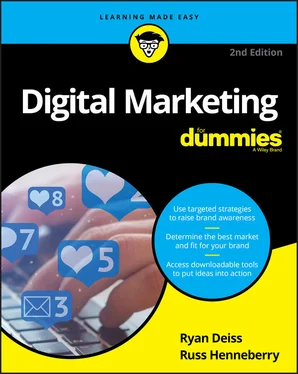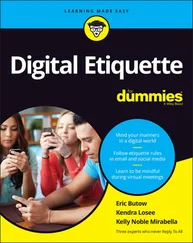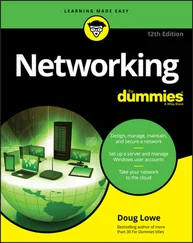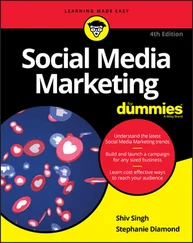Balancing Your Marketing Campaign Calendar
You may be thinking, “Which campaign should I be using in my business?” This is the wrong question, however. The right question is, “Which campaign should I be using in my business right now?” Every business should deploy each campaign type at different times to different people. So consider a few questions:
Do you want more leads and customers for your business?
Do you want to sell more to the customers you have or activate customers and leads who haven’t purchased in a while?
Do you want to turn customers into raving fans willing to buy anything you offer, and give you testimonials and referrals?
The answer, of course, is yes on all accounts.
But this point is critical to understand: One campaign can’t replace or do the job of another. An Acquisition campaign can’t do the job of a Monetization campaign. Likewise, a Monetization campaign can’t do the job of an Engagement campaign. Each campaign excels at meeting one particular goal. To maintain a healthy, sustainable business, you need to allocate time on your calendar for all three major campaign types.
If you run nothing but Acquisition campaigns, you’ll never be profitable. If you run nothing but Monetization campaigns, you’ll never add new leads and customers and, as a result, you won’t grow. If you run nothing but Engagement campaigns, you’ll have a loyal audience, but you’ll never convert your audience into customers.
 If you have no sales but do have a massive following on social media, a popular blog, or podcast with lots of subscribers or downloads, you have mastered the art of creating Engagement campaigns. The good news is that you have accomplished one of the most difficult tasks in digital marketing: building an audience. By adding Acquisition and Monetization campaigns to your marketing mix, you can transform that audience into a profitable business.
If you have no sales but do have a massive following on social media, a popular blog, or podcast with lots of subscribers or downloads, you have mastered the art of creating Engagement campaigns. The good news is that you have accomplished one of the most difficult tasks in digital marketing: building an audience. By adding Acquisition and Monetization campaigns to your marketing mix, you can transform that audience into a profitable business.
Choosing the Campaign You Need Now
In this chapter, we make the point that your business needs all three campaign types: Acquisition, Monetization, and Engagement. To run a sustainable, healthy business, you need to be acquiring new leads and customers, monetizing them, and engaging customers who advocate and promote your brand. That said, if you’re new to creating digital marketing campaigns, you should focus on building a single campaign first:
If you’re starting a brand new business or have no existing leads or subscribers, build an Acquisition campaign.
If you have existing leads and customers, but they aren’t buying as much as you would like, build a Monetization campaign.
If you’re happy with the number of leads and subscribers and the monetization of those leads and customers, build an Engagement campaign.
If you simply don’t know where to start, begin by building an Acquisition campaign, because every business needs to understand how to acquire fresh leads and convert new buyers. In the subsequent chapters of this book, we offer a number of ways to develop awareness for your brand, products, and services and convert that awareness into leads and customers.
Viewing Your Digital Marketing through the Campaign Lens
From this point forward, plan your digital marketing strategy and tactics by aligning them with the goals of the three major types of campaigns: Acquisition, Monetization, and Engagement. Never again will you decide to open a new social media account without knowing the ultimate goal behind it. Most entrepreneurs and marketers who are frustrated by digital marketing don’t see the big picture.
Frustrated digital marketers don’t understand, for example, that blogging is an outstanding tactic for growing awareness but utterly useless for monetization. They don’t realize that posting and communicating with customers on a business Facebook page can create an engaged community, but better, more effective ways to generate leads and customers are available.
As we cover specific digital marketing tactics through the remainder of this book, we frequently return to the idea of keeping your business objectives, and the campaigns that meet those objectives, in mind. As you continue on your quest to master the art and science of digital marketing, stay focused on what really matters: growing the business.
Chapter 3
IN THIS CHAPTER
 Gaining more leads by deploying the gated offer
Gaining more leads by deploying the gated offer
 Turning leads into customers
Turning leads into customers
 Filling out checklists to ensure high opt-ins and conversions
Filling out checklists to ensure high opt-ins and conversions
 Increasing your bottom line
Increasing your bottom line
Whether you’re asking people to buy something, give you their contact information, or spend time reading your blog, you’re making an offer. The way in which you make your offers — and perhaps more important, the sequenc e in which you make them — will make or break your ability to convert your prospects.
You should think of creating and nurturing relationships with your customers in the same way that you develop relationships with your friends and family. Your business might sell business to business (B2B) or business to consumer (B2C), but all businesses sell human to human (H2H). Real, individual people are buying your products and services.
Consider how perfect strangers become a married couple. The marriage proposal is an offer that is made after a sequence of other offers are made and deemed successful by both parties. Sure, the occasional marriage proposal on the first date occurs, but most relationships begin with a series of positive interactions over a period of time.
Although most people aren’t likely to propose marriage on a first date, many businesses do the equivalent of that with their prospects. They ask cold prospects to buy high-ticket, complex, and otherwise risky products and services before the relationship is ready for that offer. On the other hand, a customer who has received tremendous value from your company over a period of time is much more likely to make a high-dollar, complex, or otherwise risky purchase.
In this chapter, we unpack the different types of offers you can make, the goals of those offers, and the order in which you should present them to prospective, new, and loyal customers. The offers explained in this chapter focus on acquisition and monetization campaigns (discussed in Chapter 2).
Offering Value in Advance
Doing business online is different from doing business in person or even over the phone. In many cases, the prospective customer has no further information about your business than what is presented to her online. To acquire new leads and customers, you need to build trust and lead with value to build a relationship with your prospects or customers.
A successful relationship is a two-way street. Both sides of the relationship must benefit from the relationship, and because your company wants to begin this new relationship with a prospect, it makes sense for you to provide value first. Prospects won’t become loyal customers if you don’t first provide some value that builds trust in advance of asking them to buy . The good news is that you can provide this value with something as simple as an insightful, informative blog post or podcast that helps them solve a problem. You offer this value for free and with no strings attached to begin a healthy and mutually beneficial relationship.
Читать дальше

 If you have no sales but do have a massive following on social media, a popular blog, or podcast with lots of subscribers or downloads, you have mastered the art of creating Engagement campaigns. The good news is that you have accomplished one of the most difficult tasks in digital marketing: building an audience. By adding Acquisition and Monetization campaigns to your marketing mix, you can transform that audience into a profitable business.
If you have no sales but do have a massive following on social media, a popular blog, or podcast with lots of subscribers or downloads, you have mastered the art of creating Engagement campaigns. The good news is that you have accomplished one of the most difficult tasks in digital marketing: building an audience. By adding Acquisition and Monetization campaigns to your marketing mix, you can transform that audience into a profitable business. Gaining more leads by deploying the gated offer
Gaining more leads by deploying the gated offer










